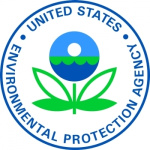- Industry: Government
- Number of terms: 11955
- Number of blossaries: 0
- Company Profile:
U.S. Environmental Protection Agency (EPA) is a federal agency responsible for the development and enforcement of regulations for human health and environment protection. The agency researches and sets standards for environmental programs and delegates. It was founded in 1970 following the proposal ...
The highest dose in a toxicity stufy which does not result in adverse health effects. A level of exposure which does not cause observable harm.
Industry:Agricultural chemicals
The highest dose in a toxicity stufy which does not result in adverse health effects. A level of exposure which does not cause observable harm.
Industry:Agricultural chemicals
General term which refers to a combination of home/garden and industrial/commercial/governmental sectors.
Industry:Agricultural chemicals
Any source of pollution not associated with a distinct discharge point. Includes sources such as rainwater, runoff from agricultural lands, industrial sites, parking lots, and timber operations, as well as escaping gases from pipes and fittings.
Industry:Agricultural chemicals
Any organism for which the pesticide was not intended to control.
Industry:Agricultural chemicals
The lowest concentration of a substance in air that can be smelled. Odor thresholds are highly variable because of the differing ability of individuals to detect odors.
Industry:Agricultural chemicals
Food, feed crops, and livestock grown within an intentionally-diversified, self-sustaining agro-ecosystem. In practice, farmers build up nutrients in the soil using compost, agricultural wastes, and cover crops instead of synthetically derived fertilizers to increase productivity, rotate crops, weed mechanically, and reduce dramatically their dependence on the entire family of pesticides. Farmers must be certified to characterize crops as organically grown and can only use approved natural and synthetic biochemicals, agents, and materials for three consecutive years prior to harvest. Livestock must be fed a diet that includes grains and forages that have been organically grown and cannot receive hormones, sub-therapeutic antibiotics, or other growth promoters.
Industry:Agricultural chemicals
Any living being, whether plant, mammal, bird, insect, reptile, fish, crustacean, aquatic or estuarine animal, or bacterium.
Industry:Agricultural chemicals
Chemicals registered as pesticides but which are produced and marketed mostly for other purposes, i.e., multi-use chemicals. Notable examples are sulfur, petroleum products (e.g., kerosene, oils and distillates), salt and sulfuric acid.
Industry:Agricultural chemicals
One ppb is comparable to one kernel of corn in a filled, 45-foot silo, 16 feet in diameter.
Industry:Agricultural chemicals
